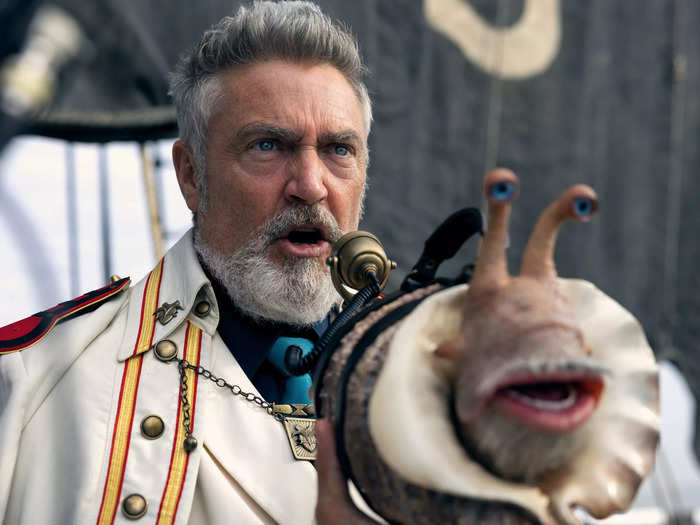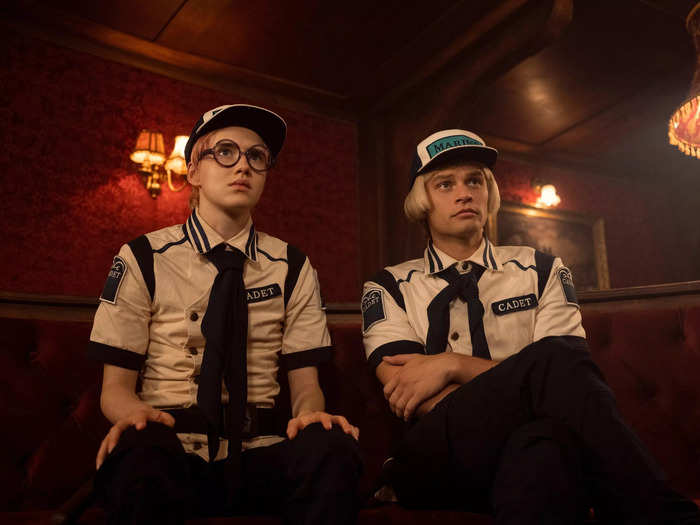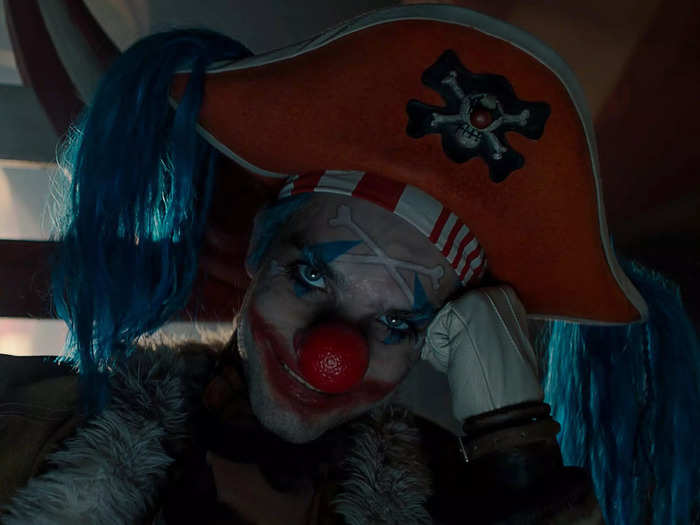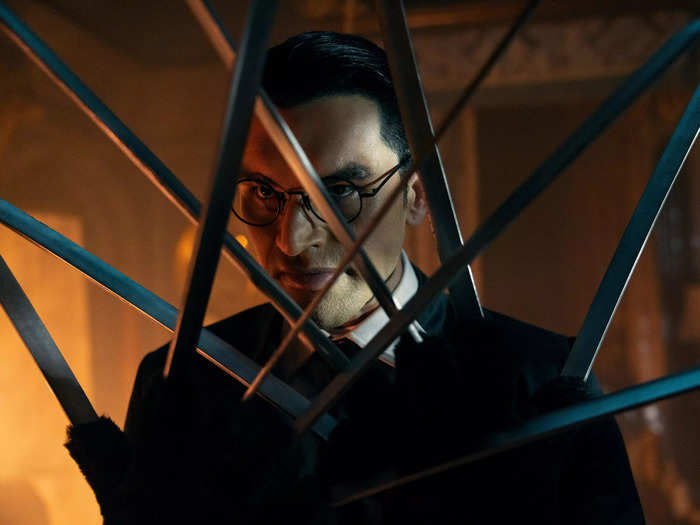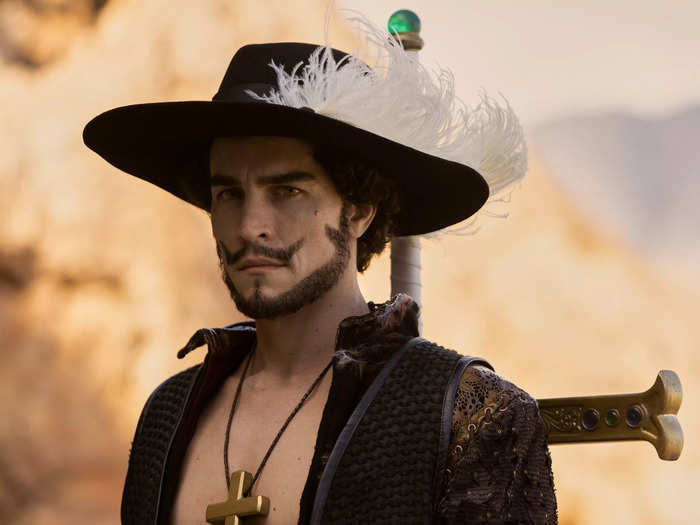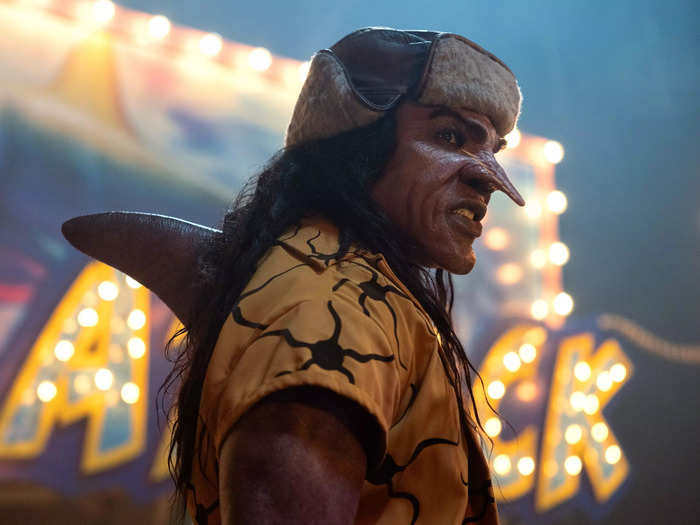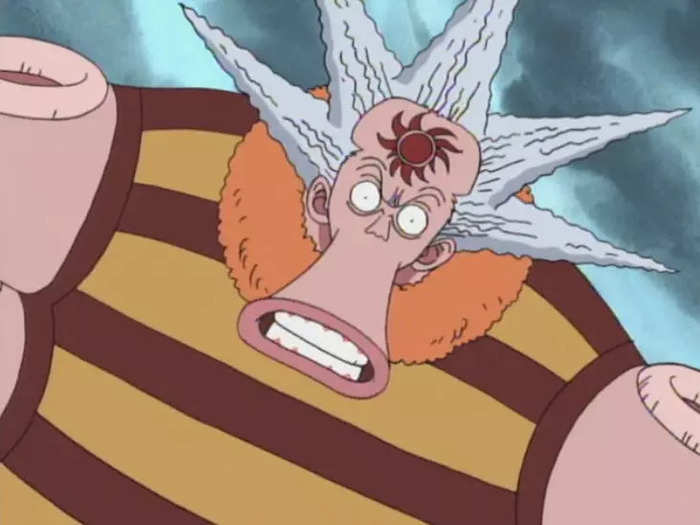Iñaki Godoy as Luffy in Netflix's "One Piece."Netflix
- Netflix's "One Piece" live action essentially adapts the East Blue Saga from the manga and anime.
- While it shares many of the same story beats and villains, there are some differences.
While Netflix's "One Piece" is an adaptation of Eiichiro Oda's seminal manga series of the same name, it had to take some liberties and make changes along the way.
The live-action series stars Iñaki Godoy as Monkey D. Luffy, a young man with rubber powers who aspires to become the King of the Pirates. In the first season, he gathers the initial members of his crew as they set off for a treacherous stretch of ocean called the Grand Line in pursuit of the former pirate king's treasure, known as the One Piece.
The first season adapts the East Blue Saga from the manga, just as the "One Piece" anime (which, with the exception of the occasional filler arc or episode, sticks much closer to Oda's manga) did beginning with its premiere in 1999. Many of the characters and major story beats are the same, but the live-action adaptation moves up some characters from later in the story while also condensing moments from the source material.
Here are the biggest differences between Netflix's "One Piece" live-action series and Oda's manga and the anime adaptation of it.
Garp is introduced much later in the anime and manga.
Vincent Regan as Vice-Admiral Garp in "One Piece." Casey Crafford/Netflix
The biggest change in Netflix's "One Piece" is the inclusion of Marine Vice-Admiral Garp (Vincent Regan) in the first arc of the show.
In the first season of the live-action show, Garp becomes aware of Luffy's (Godoy) travels in East Blue and hunts him down until they finally meet in the finale at Coco Village. It is also revealed that Garp is Luffy's secret grandfather, who wanted Luffy to become a marine instead of a pirate.
However, after seeing Luffy's resilience, Garp reveals this was all a test to see if Luffy is ready to find the One Piece.
In the anime, Garp isn't introduced until episode 68 in a filler episode that explains what happens to Captain Morgan after he is defeated by Luffy and Zoro. However, he is introduced properly in episode 313 as Luffy's grandfather when he catches up with the Straw Hat Pirates to tell off Luffy.
Netflix's "One Piece" showrunner Steven Maeda told Variety that the change was made so that there was a chase in the first season.
"One of the decisions that I made early on was wanting to have an antagonist in pursuit," Maeda said. "And Garp seemed to lend himself so well to the idea of pursuers coming after Luffy and company. It was a change we made in order to keep the jeopardy up, and to feel like there were big stakes."
Koby and Helmeppo are also given a larger story arc in season one.
Morgan Davies and Aidan Scott as Koby and Helmeppo in "One Piece." Raquel Fernandes/Netflix
When Garp chases Luffy, he brings two cadets with him: Koby (Morgan Davies) and Helmeppo (Aidan Scott). Since Garp has a larger role in season one than he does in the manga, Koby and Helmeppo do too.
While the two appear in anime filler episodes and manga covers, they do not really show up in the main story again until episode 314 when Garp catches up with the Straw Hats. Because of that change, there are arcs in season one of the Netflix show, such as Garp using Koby to find Luffy, that are completely original.
We do not see the weapon Buggy used to destroy Orange Town.
Jeff Ward as Buggy the Clown in "One Piece." Netflix
In episode three, Luffy, Nami (Emily Rudd), and Zoro (Mackenyu Arata) get captured by Buggy the Clown (Jeff Ward) and his circus pirate crew. When Nami tries to escape from them, she leaves the circus marquee to find a town that has been destroyed.
It is implied this is done by Buggy and his pirates, but the actual method of destruction isn't show.
In the anime and manga, the Straw Hat pirates spend more time in Orange Town where they first come across Buggy and get to know the villagers. In addition, the town decimation is given a source: a special powerful cannonball that Buggy created called Buggy Balls. (This ends up backfiring when Buggy fires it at Luffy and Luffy bounces it back.)
Captain Kuro doesn't have his entire pirate crew in the show.
Alexander Maniatis as Kuro in "One Piece." Casey Crafford/Netflix
In episodes four and five, Luffy and his crew stop a group of pirates that posed as staff for a rich girl, Kaya (Celeste Loots), in order to steal her fortune.
In the anime and manga, Kuro has an entire pirate crew who were meant to kill Kaya instead so that he wouldn't be tied to her murder. In the live-action series, Buchi and Sham are the only two members of the crew.
The Straw Hats in the manga and anime have to fight a giant group of people rather than just the three the live-action characters face in the Netflix show.
There's a smaller focus on the fighting chefs of Baratie — and the show cuts down on the antagonist Don Krieg.
Steven Ward as Mihawk in "One Piece." Casey Crafford/Netflix
In the "One Piece" manga, Sanji's not the only combat-proficient chef in the Baratie kitchen — led by Zeff, a former pirate, many of the restaurant's cooks are also known for being pirate-like. And they're more than willing to defend the restaurant themselves.
Much of their minimized role in the live-action show is likely due to the fact that it almost completely skips over the pirate captain Don Krieg, who threatens Baratie and the Straw Hats after Mihawk decimates his fleet on the Grand Line. In the manga, there's a full showdown between the Straw Hats, the Baratie staff, and Don Krieg's crew. But in the show, Krieg is a footnote, the destruction of his crew merely a means of displaying Mihawk's massive power before his duel with Zoro.
While Patty, one of the prominent Baratie chefs, appears in the show, he doesn't have quite as critical of a role as he does in the manga.
Luffy doesn't fight Arlong before Arlong Park in the anime.
McKinley Belcher III as Arlong in "One Piece." Casey Crafford/Netflix
In episode six, fish-man Arlong (McKinley Belcher III) hunts Luffy to the floating restaurant Baratie and the pair end up fighting. In the anime and manga, the pair's first fight ended similarlly — with Arlong defeating Luffy and throwing him to the sea — but the circumstances were much different.
For starters, Arlong was not aware of Luffy's existence before Arlong Park and didn't use Buggy to chase him either. Because of that, their fight only occurs in Arlong Park.
By contrast, while in Baratie, Luffy and the Straw Hats fight Gin and the group of pirates that are killed by Mihawk in the live-action episode five.
In the anime, the group of pirates called Krieg pirates are also defeated by Mihawk in the Grand Line but return to Baratie to get food. However, when they try to take over the restaurant after being fed, Luffy and the Straw Hats fight them off the ship and protect the Baratie.
The live action also cut one of Arlong's officers, an octopus fish-man named Hatchan, who's an important character later in the manga.
Hatchan in the "One Piece" anime series. Toei Animation
In the manga and anime, Hatchan — frequently referred to by his nickname, Hachi — is an octopus fish-man and Arlong's first mate. While Zoro wields three swords at once, Hachi can wield six, and is known as the second-best swordsman to hail from Fish-Man Island.
Hachi escapes after the conflict at Arlong Park, and becomes the subject of one of the mini-arcs in the "One Piece" manga, which appear in single panels at the beginning of chapters. Later in the story, after its two-year time skip, Hachi becomes an important character when the Straw Hats eventually make it further down the Grand Line later in the series, and during the Fish-Man Island arc.
While there's a character credited as "Hachi / Angry Fishman" in episode seven of the live-action show, he's not the same fleshed-out character as in the manga.

